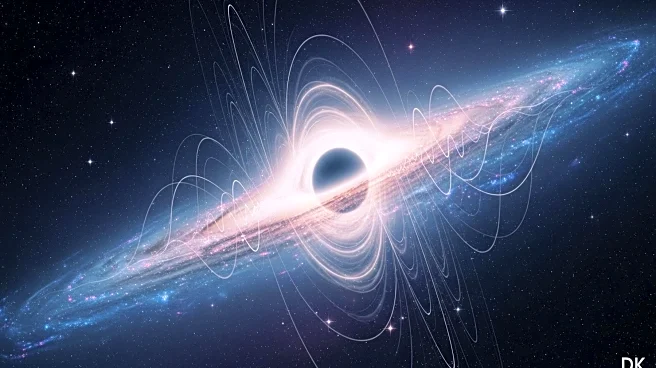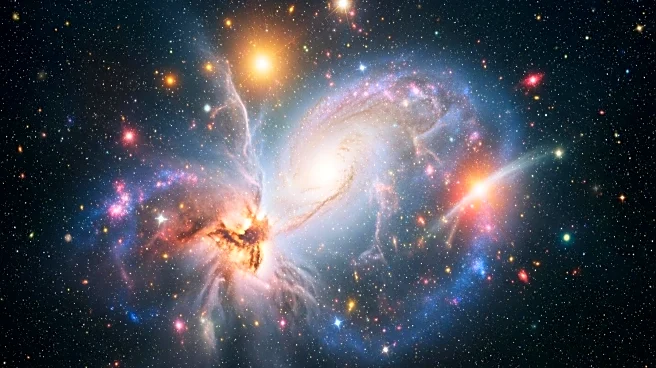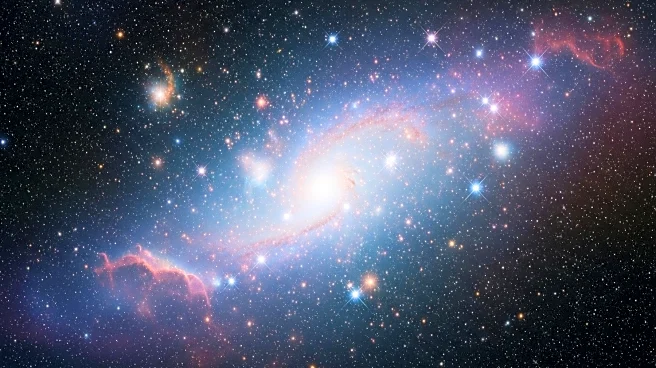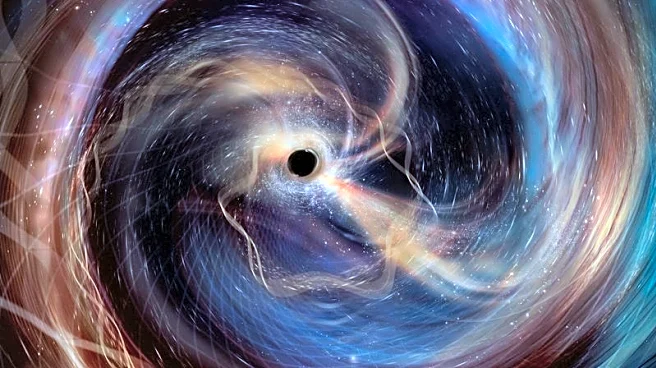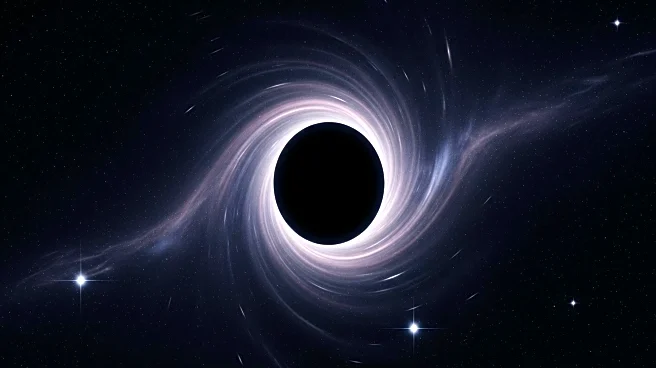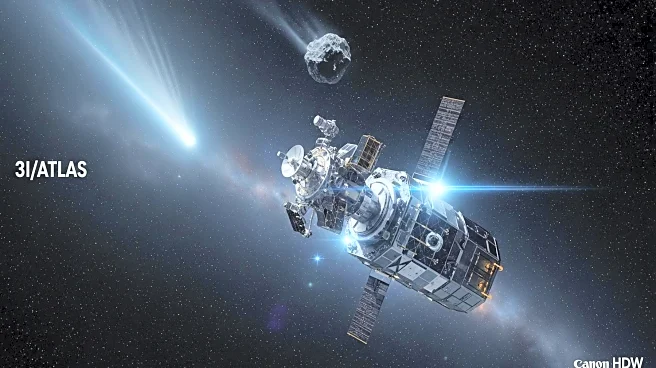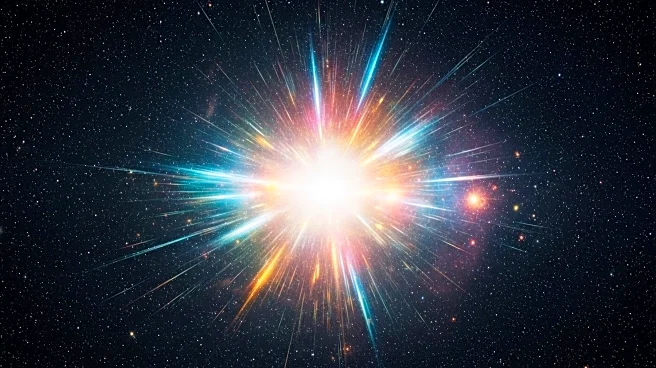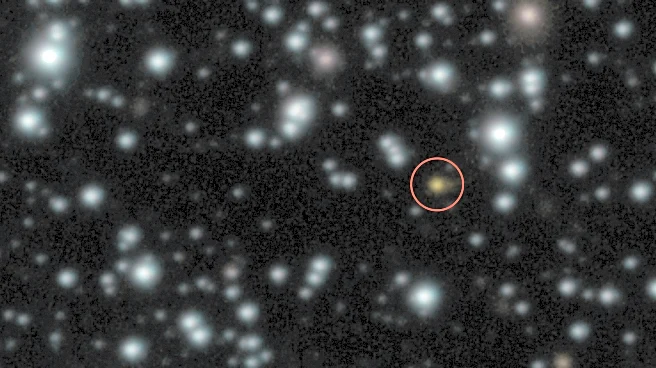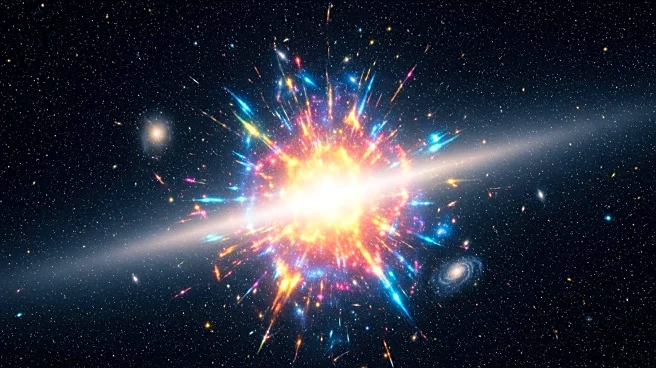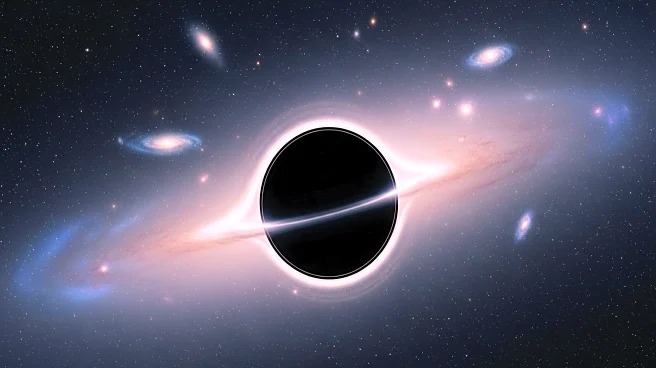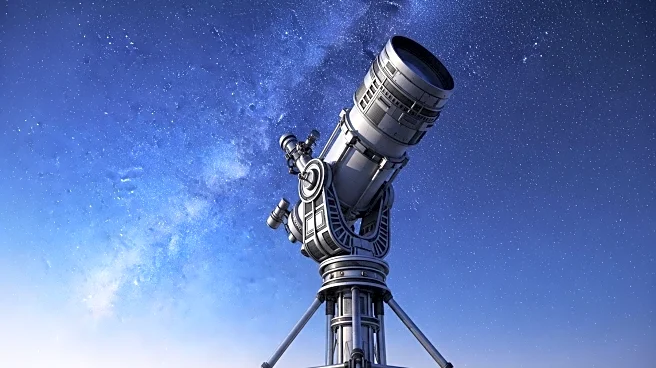What is the story about?
What's Happening?
The LIGO gravitational wave observatory has detected an exceptionally loud collision between two black holes, allowing physicists to test Stephen Hawking's black hole area theorem. Proposed in 1971, the theorem states that when two black holes merge, the resulting black hole's event horizon cannot have an area smaller than the sum of the two original black holes. The recent collision, named GW250114, was detected with unprecedented detail, confirming Hawking's theorem with a confidence level of 99.999%. This event was twice as loud as any other gravitational wave detected to date.
Why It's Important?
The confirmation of Hawking's theorem marks a significant milestone in the field of astrophysics, providing a deeper understanding of black hole mechanics and the nature of the universe. It reinforces the connection between general relativity and quantum mechanics, paving the way for new research on quantum gravity. The findings also validate Roy Kerr's equations from the 1960s, which describe black holes based on their mass and spin. This breakthrough could lead to advancements in theoretical physics and our understanding of cosmic phenomena.
What's Next?
With upgrades to LIGO and other planned observatories, researchers anticipate even greater sensitivity in detecting gravitational waves. Future observations may reveal more about the fundamental physics of black holes and potentially uncover discrepancies between general relativity and quantum mechanics. The scientific community will continue to explore the implications of these findings, potentially leading to new theories and discoveries in astrophysics.
AI Generated Content
Do you find this article useful?
